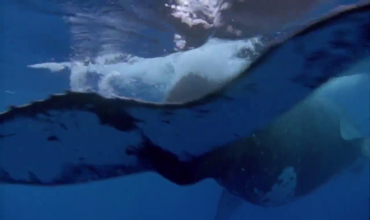-
or
Move to the previous cue
-
or
Move to the next cue
-
or
Increase size of captions
-
or
Decrease size of captions
-
or
Translate current cue
Plot summary
In the opening sequence, an aerial camera zooms in on a solitary Komodo dragon from afar. This, states Attenborough, is the last place on Earth still ruled by reptiles. Though they may seem primitive, reptiles and amphibians still thrive thanks to diverse survival strategies. In Venezuela, a pebble toad evades a tarantula by free-falling down a steep rock face. The basilisk, nicknamed the Jesus Christ lizard, can literally run on water and the Brazilian pygmy gecko is so light it does not break the surface. Reptiles are cold-blooded, and some have developed unusual strategies to absorb heat. Namaqua chameleons darken the skin of the side of their body facing the sun. A male red-sided garter snake masquerades as a female using fake pheromones, attracting rival males which help raise its body temperature and thus its chance of breeding. Malagasy collared lizards conceal their eggs by burying them, but egg-eating hognose snakes stake out their favourite laying sites. Niue Island sea kraits lay theirs in a chamber only accessible via an underwater tunnel. Other reptiles guard their eggs. Horned lizards drive off predators, but larger adversaries such as coachwhip snakes prompt a different reaction – the lizard plays dead. Komodo dragons prey on water buffalo in the dry season. They stalk a buffalo for three weeks as it slowly succumbs to a toxic bite, then strip the carcass in four hours. In Life on Location, the Komodo film crew tell of the harrowing experience of filming the dragon hunt.

